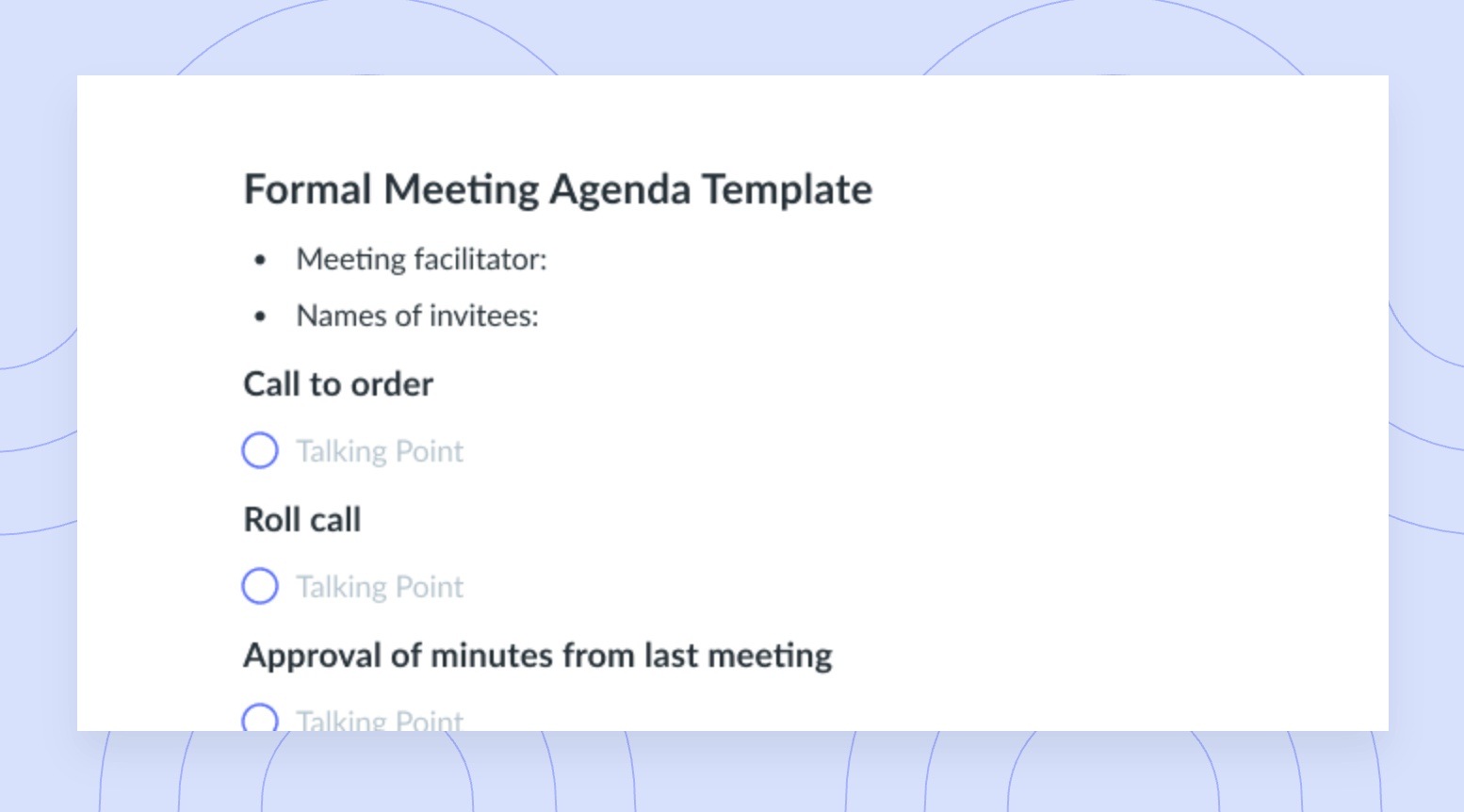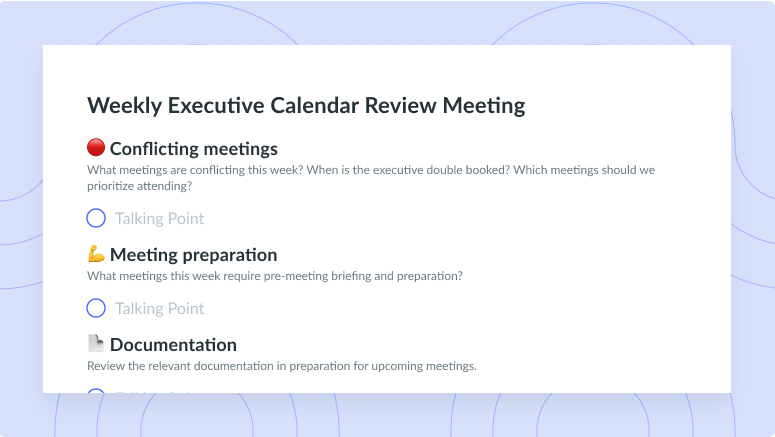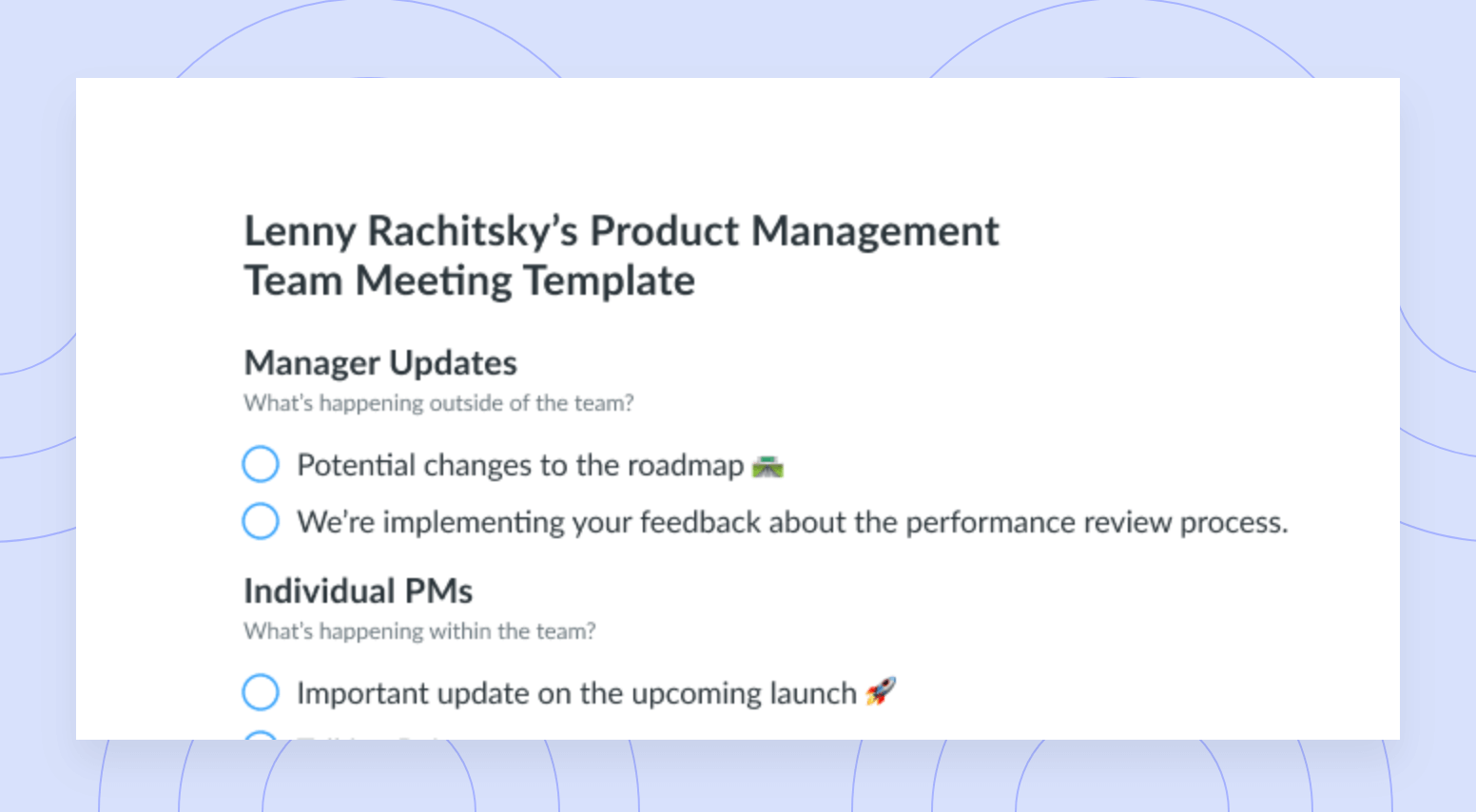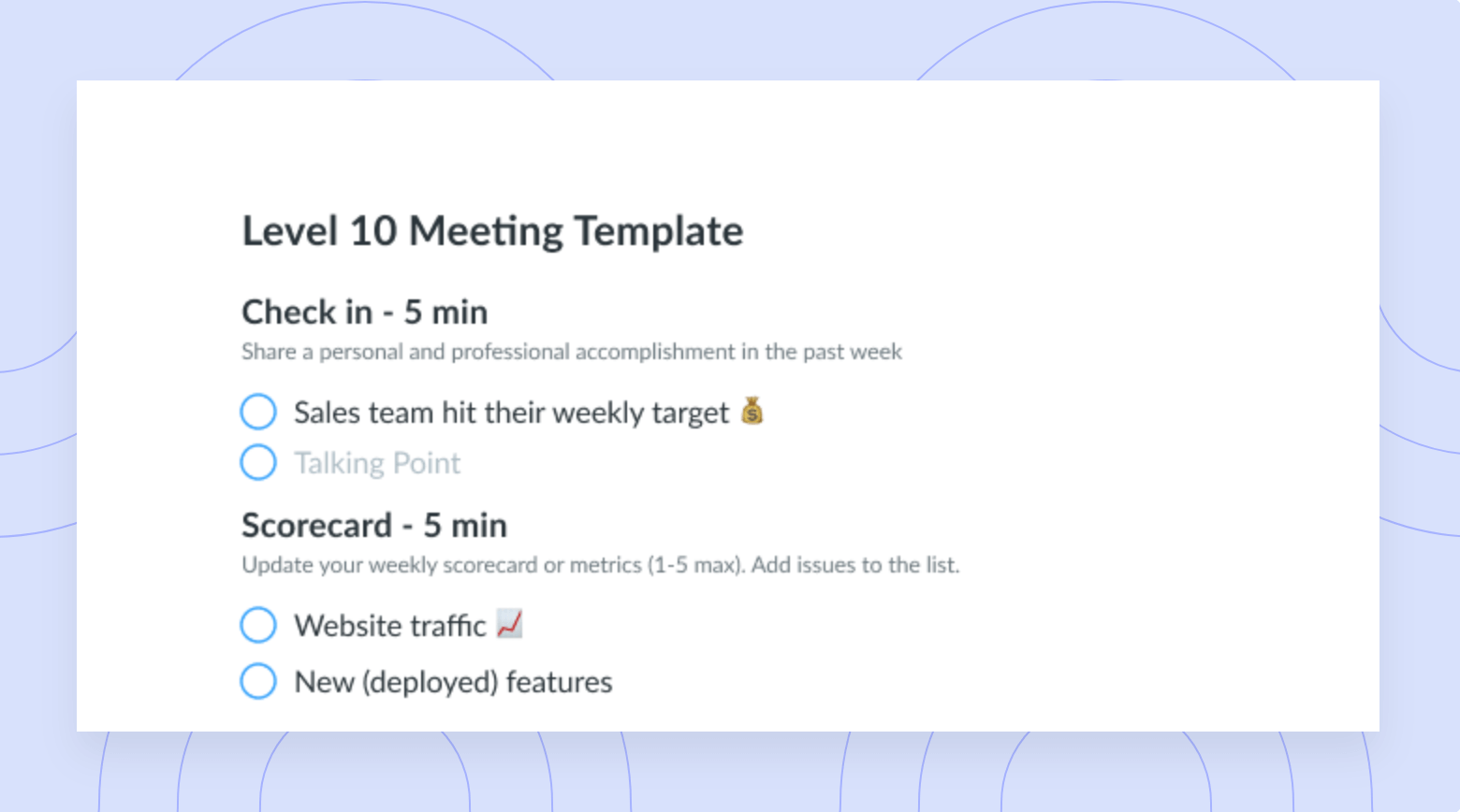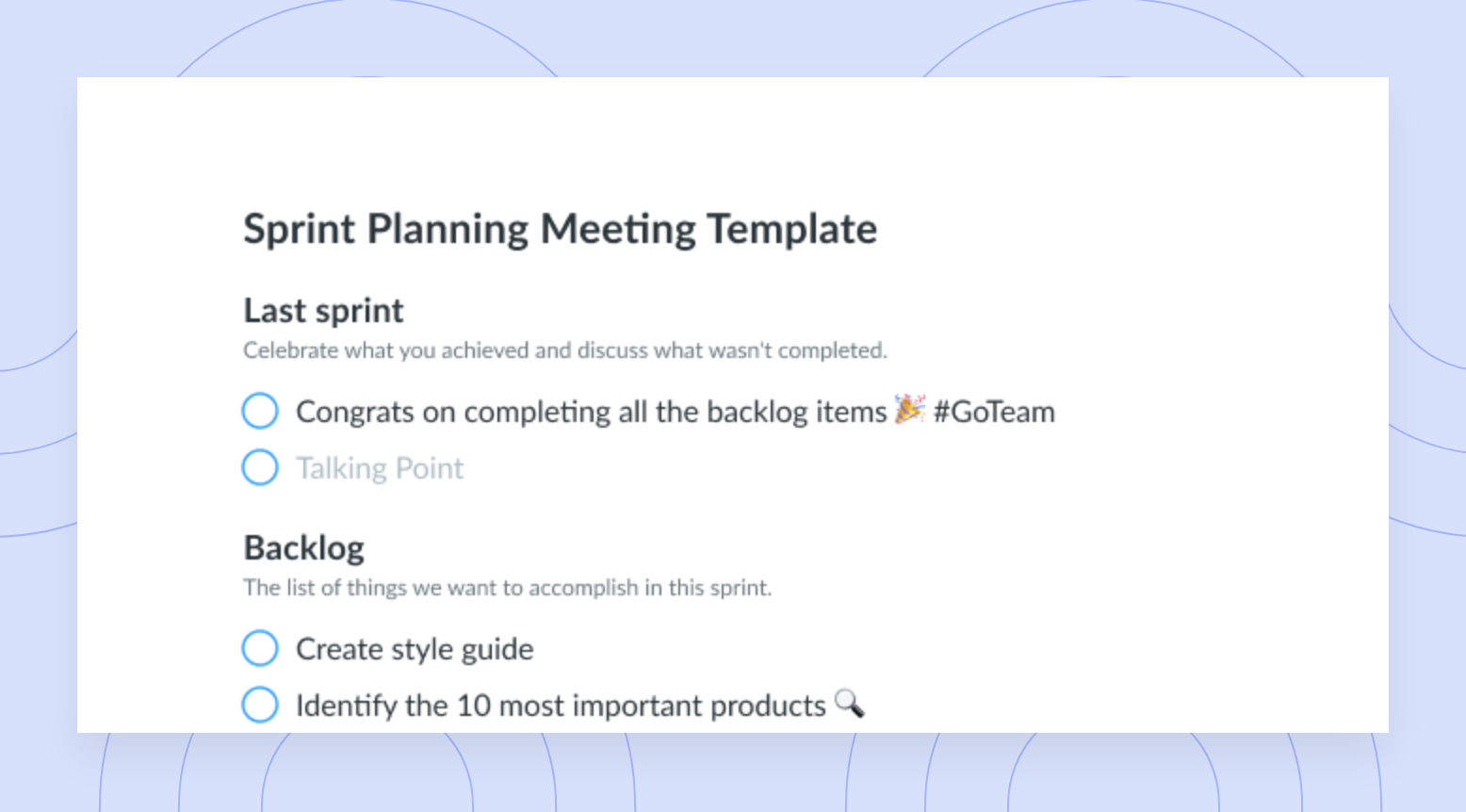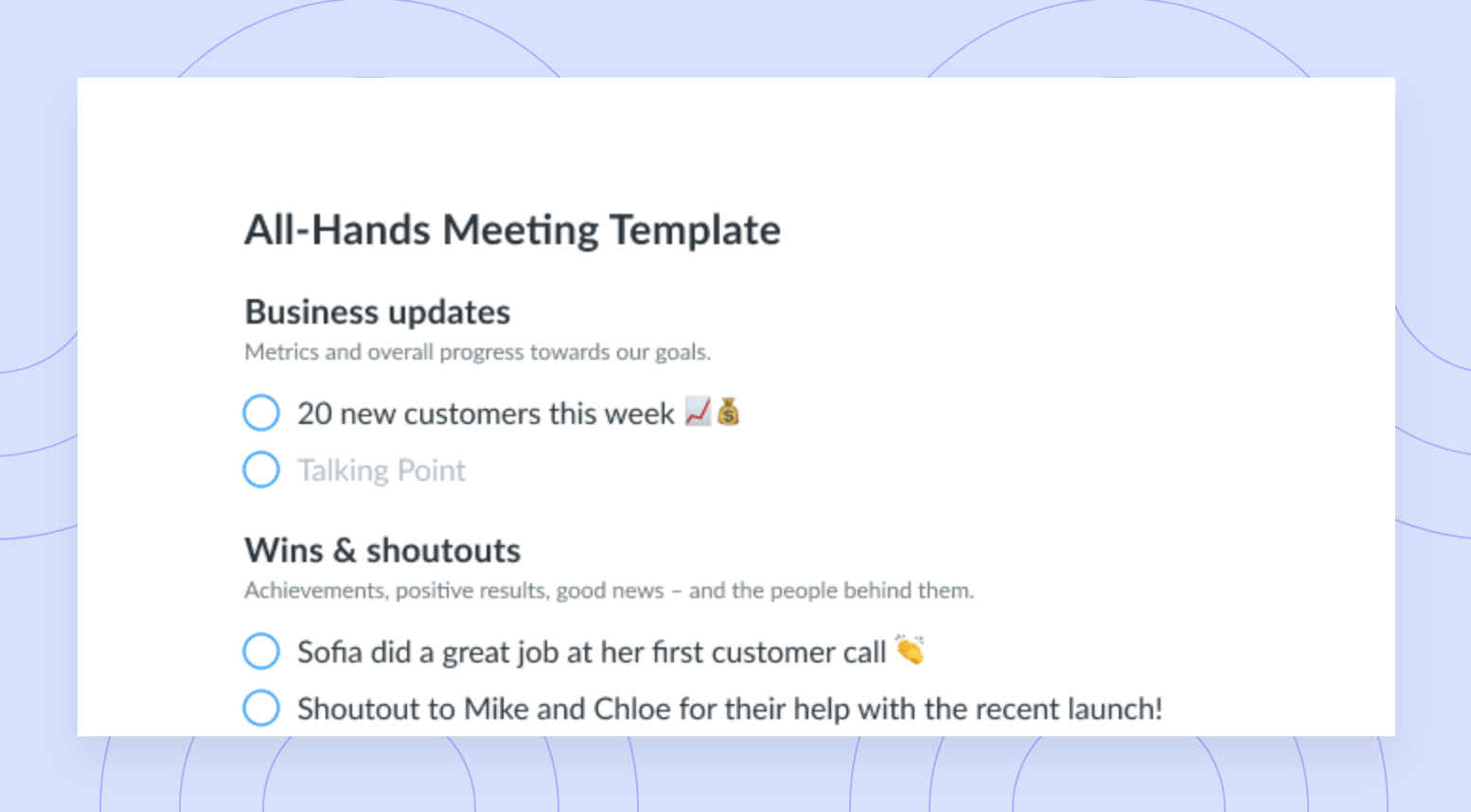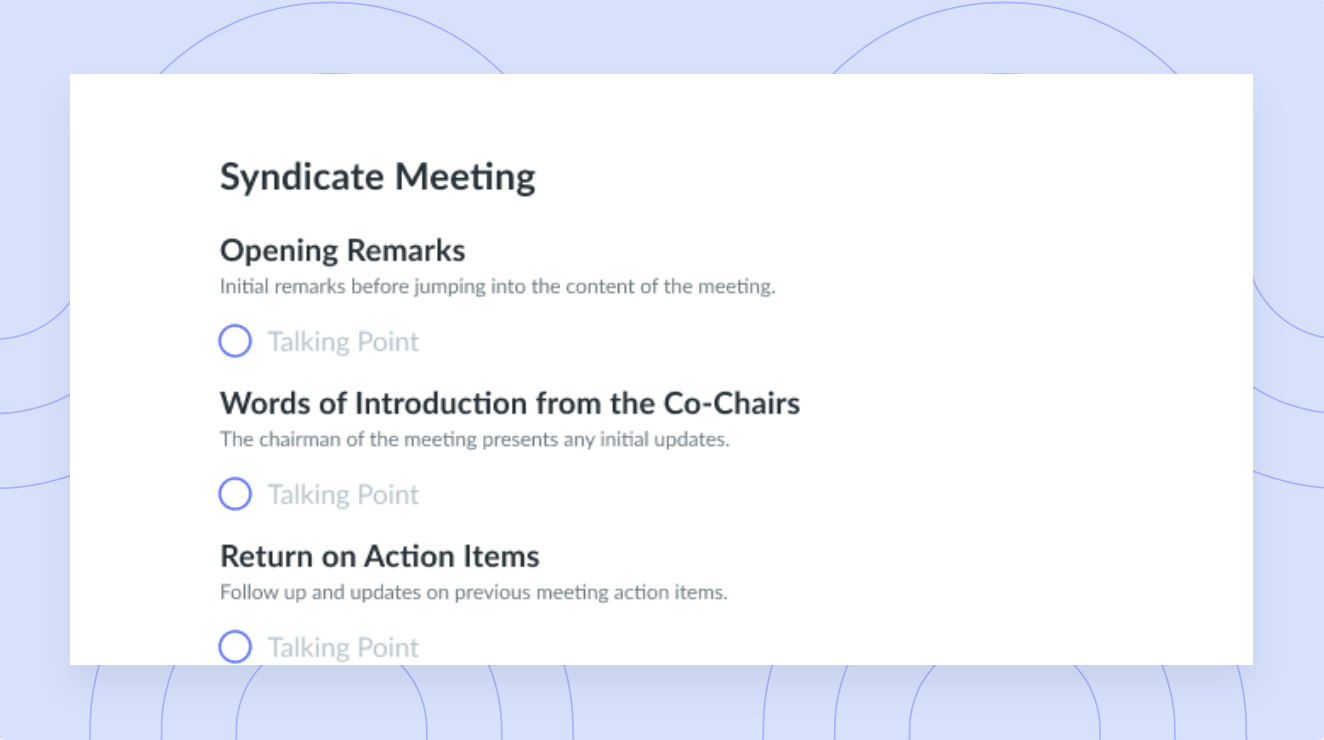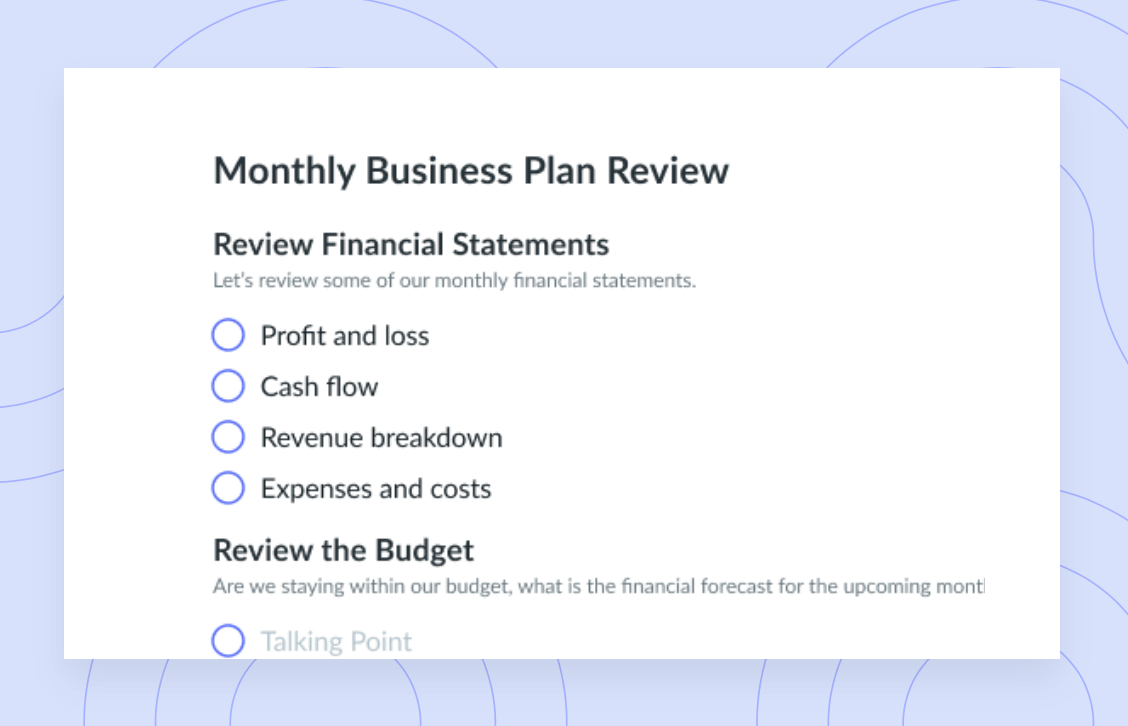How to Communicate Effectively At Work: 12 Tips
Exceptional leaders prioritize effective communication as a cornerstone for enhancing team productivity and fostering growth at work.
Learning how to communicate effectively in the workplace is crucial to success. Great communication skills are one of the most sought-after leadership competencies, making them that much more important to work on. Open and effective communication is essential to any working team, so we have you covered with a complete guide to finessing your communication strategy.
- What are the 4 types of communication?
- The importance of good communication in the workplace
- 12 tips to create effective communication in the workplace
- Empower your communication skills with Fellow
What are the 4 types of communication?
1 Verbal communication
Verbal communication sends a message to another person or group via speech. This type of communication can occur through several different channels, whether face-to-face or through a virtual call. Therefore, it’s really important to pay attention to your tone of voice and always speak clearly, respectfully, and professionally. This method of communication is the most commonly known and likely the most used method in the workplace.
2 Non-verbal communication
Nonverbal communication is the way we send a message without actually using words. By using nonverbal cues like body language, eye contact, and facial expressions, you can show your team members that you’re engaged and actively listening. This fosters better understanding and respect between team members.
3 Written communication
Written communication sends a message by using words to convey the information that we’re trying to get across. Well-crafted written communication is key to maintaining a professional image and credibility in the workplace. Paying attention to grammar, punctuation, and clarity in written messages prevents miscommunication and misalignment. One way to do this is by writing clear, actionable meeting agendas so everyone has the information to show up ready to contribute.
4 Visual communication
Visual communication methods are those that can be seen. In the workplace, visual communication tools are often used to support the primary information being conveyed. Visual aids like graphs, charts and images can enhance communication by helping team members better understand information and make complex information more accessible.

Enhance team communication
Take workplace communication to the next level with Fellow. Our collaborative agenda feature allows you to effortlessly share meeting priorities and discussion items, ensuring that everyone has the necessary context and information to arrive prepared and ready to contribute. Simplify your meeting processes and improve team collaboration with Fellow today!
The importance of good communication in the workplace
Streamlining internal communication across your organization provides a wealth of benefits:
- Improves productivity and efficiency: Empowering team members to coordinate and share information easily saves time and effort.
- Allows for better collaboration: When team members can freely exchange ideas and provide input, it leads to better solutions.
- Promotes trust and transparency: Open dialogue between team members and leadership builds morale and a foundation of trust.
- Reduces conflicts: Allows for issues to be proactively addressed before escalating, helping maintain workplace harmony.
- Boosts employee engagement: When team members feel heard and valued through effective communication, it can have a positive effect on employee retention.
12 tips to create effective communication in the workplace
Now that we’ve gone through the most common types of communication that take place in the workplace, here are some effective communication tactics to engage with:
- Set clear goals and expectations
- Ask clarifying questions
- Schedule regular one-on-one meetings
- Praise in public, criticize in private
- Assume positive intent
- Repeat important messages
- Raise your words, not your voice
- Hold town halls and cross-functional check-ins
- Practice two-way communication
- Show appreciation
- Have 1:1 time with your team members
- Use technology to make your communication more organized
1 Set clear goals and expectations
First and foremost, make sure that you’re setting clear goals and expectations with your team members. If employees don’t understand the end goal or what’s expected of them, there is definitely a gap in communication that needs to be addressed.
When you communicate goals and expectations properly, your team will be much more productive and effective in completing their tasks because they’ll have understood what is required from the get-go. Make sure to leave some time for questions and to ask your team if they’ve understood the task at hand.
2 Ask clarifying questions
If you haven’t fully grasped something, make sure that you ask clarifying questions. Asking questions not only shows you’re listening attentively but also confirms that you’ve understood the communicator and reinforces the information that’s been shared with you.
Clarifying questions can also help you gain a stronger understanding of the topic being discussed, making this a great learning opportunity. Make sure that you only ask questions when you’re fully engaged, attentive, and related to what is being spoken about.
3 Schedule regular one-on-one meetings
Another way to improve or sustain strong communication between you and your team is to schedule regular one-on-one meetings. Some managers shy away from one-on-ones because they see them as time-consuming, which is an unfortunate mistake. This time is more than worthwhile because it creates open communication and transparency. This is an opportunity to enhance employee engagement and build strong professional relationships, resulting in higher employee performance and satisfaction.
If you’re confused about where to start, Fellow has an extensive library of one-on-one meeting templates you can leverage to foster productive discussions. Here are just a few expert-approved templates from Kim Scott (Author of Radical Candor), Rameez Tase (Co-founder at Antenna), and Rukmini Reddy (SVP Engineering, Platform at Slack) that will transform your one-on-one structure.
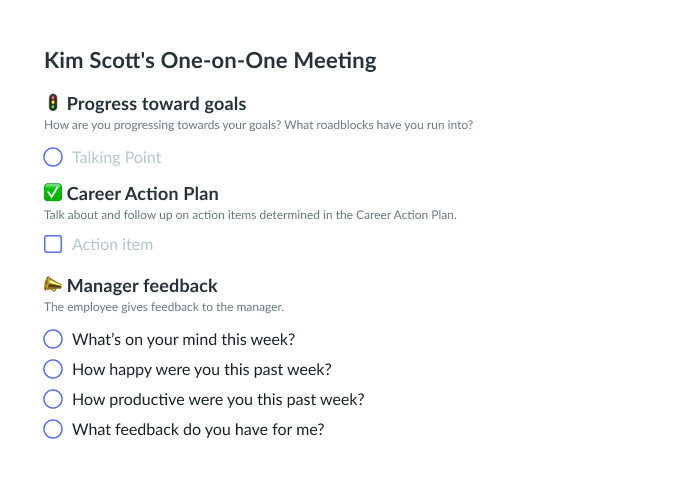
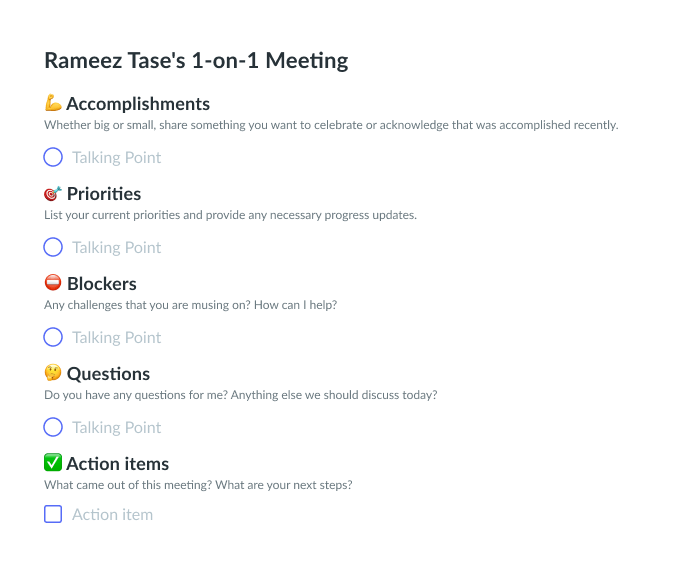
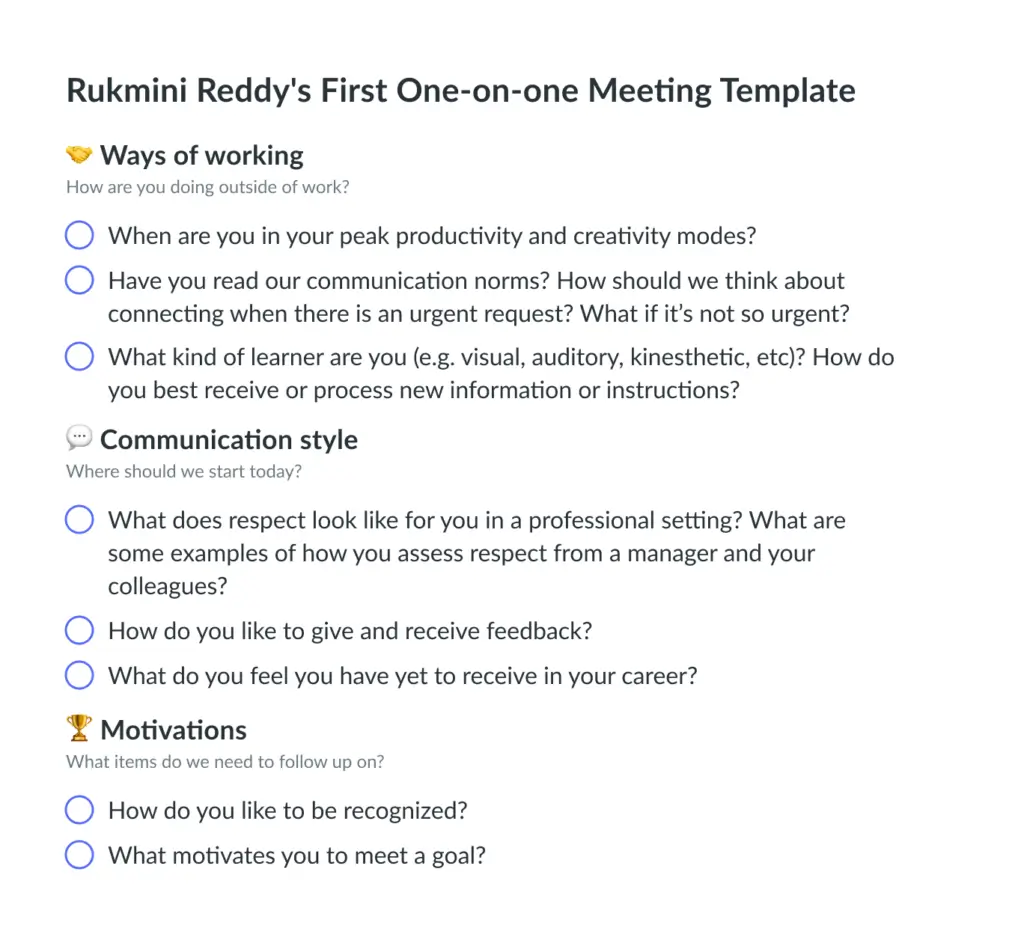
4 Praise in public, criticize in private
Praise in public and criticize privately. This is a good rule of thumb and a strong communication method. It’s important and nice for your other team members to recognize when a job has been done well. Conversely, it’s not important for the rest of the team to know when someone has missed the mark. Giving your individual criticism in private is more respectful and professional. Constructive feedback is most effectively delivered face to face and, where that’s not possible, through a video call so that it’s more personal.
Fellow’s feedback tool allows your team to share and receive constructive feedback on performance, meetings, and projects. You can even gather anonymous feedback so you get honest but private responses to help you improve.
5 Assume positive intent
People are inherently good. If something upsets you or feels negative, ask yourself: Was there malicious intent? Did they mean to upset me? Most times, people have a positive intent, and if they’ve done something that rattles your cage a little, it was probably unintentional. Open communication is important in these instances so be upfront and honest with the individual and let them know how their words or actions left you feeling so that you can clear the air.
6 Repeat important messages in different formats
If you need to convey an important message, consider repeating or delivering that information in a few different ways so that it really sticks. Typically, an important message is first conveyed in a meeting. That message can then be reinforced when participants write meeting notes, circulate meeting minutes, action items are sent, or a meeting recap is shared with the rest of the team. When the message is relayed several times through several different channels, chances are your team will remember.
7 Raise your words, not your voice
It’s really important to work on and expand your professional vocabulary to articulate what you’d like to say in the most appropriate way possible. It’s really important not only to pay attention to what we’re saying but how we’re saying it. If you feel yourself getting heated in a discussion, take some time to think about the most appropriate way to respond rather than reacting immediately out of frustration or anger. Never raise your voice at work! It’s not a good look, and it also crosses workplace boundaries.
8 Hold town halls and cross-functional check-ins
Holding town hall meetings, which the entire company attends, including senior members, is valuable for fostering open communications across the entire company. Town Hall meetings are a good idea because employees can interact with individuals they don’t often get the opportunity to work with. It’s a good opportunity for leaders to share critical results, and company-wide updates and to celebrate achievements. Similarly, cross-functional check-ins bring together groups of employees who don’t typically work together to update one another so that they can get everyone on the same page. This will foster effective organizational communication in the workplace and bring your team closer together.
9 Practice two-way communication
Effective communication is a two-way street. It’s not just about expressing your thoughts and ideas but also actively listening to others and knowing what their communication styles are like. By practicing two-way communication, you create an environment where everyone feels heard and valued. Encourage open dialogue, ask for feedback, and make sure to actively listen to what others have to say. Remember, effective communication is a collaborative effort. Make sure you are not just delivering information but also actively listening to feedback and input from your team. This shows you value their perspective.
10 Show appreciation
Showing appreciation is a simple yet powerful way to improve communication at work. When you acknowledge and express gratitude for your colleagues’ efforts and achievements, it fosters a positive and supportive work culture. Whether it’s a simple “thank you,” public recognition, or a word of encouragement, taking the time to show appreciation goes a long way in building stronger relationships and enhancing communication within your team.
11 Have 1:1 time with your team members
One-on-ones are valuable opportunities to strengthen communication and build rapport in your team. These dedicated meetings provide a space for individual discussions, addressing concerns, providing feedback, and setting goals. With strengthened relationships and communication comes higher employee satisfaction and higher performance.
If you want to optimize your one-on-ones to become powerful tools for growth and development, check out this Supermanagers episode with Steven Rogelberg, a leading organizational psychologist and author of ‘Glad We Met: The Art and Science of 1:1 Meetings.’ He shares his expertise in structuring these meetings for meaningful conversation and unlocking potential.
12 Use technology to make your communication more organized
Leveraging technology can greatly enhance communication efficiency. It provides an accessible, steady communication stream between your team members, ensuring everyone is aligned on priorities. You may want to check out some team communication tools or use AI in the workforce with software like Fellow to stay organized and streamline communication processes. By utilizing technology, you can optimize your communication practices and foster smoother collaboration among team members.
Empower your communication skills with Fellow
Effective communication is essential for any high-performing team, but you may need some support to get there. Fellow, an all-in-one AI meeting transcription and management software, is designed to help teams communicate and collaborate effectively.
With Fellow, your team can easily collaborate on meeting agendas, ensuring clear communication of what needs to be accomplished in each meeting. These meeting agendas and notes can be shared with the entire team, making information easily accessible and preventing it from getting lost.
Make sure you leverage Fellow’s AI Meeting Copilot, too, which automatically records, transcribes, and summarizes your meetings, capturing key meeting decisions and discussions and communicating them to the wider team. But that’s not all—Fellow also seamlessly integrates with your favorite tools like Slack and Google Meet, enabling smooth communication across different teams and workflows.
By utilizing Fellow’s features and 500+ expert-approved templates, your team can establish better communication habits for improved teamwork and increased efficiency across the board. Get started with Fellow today!

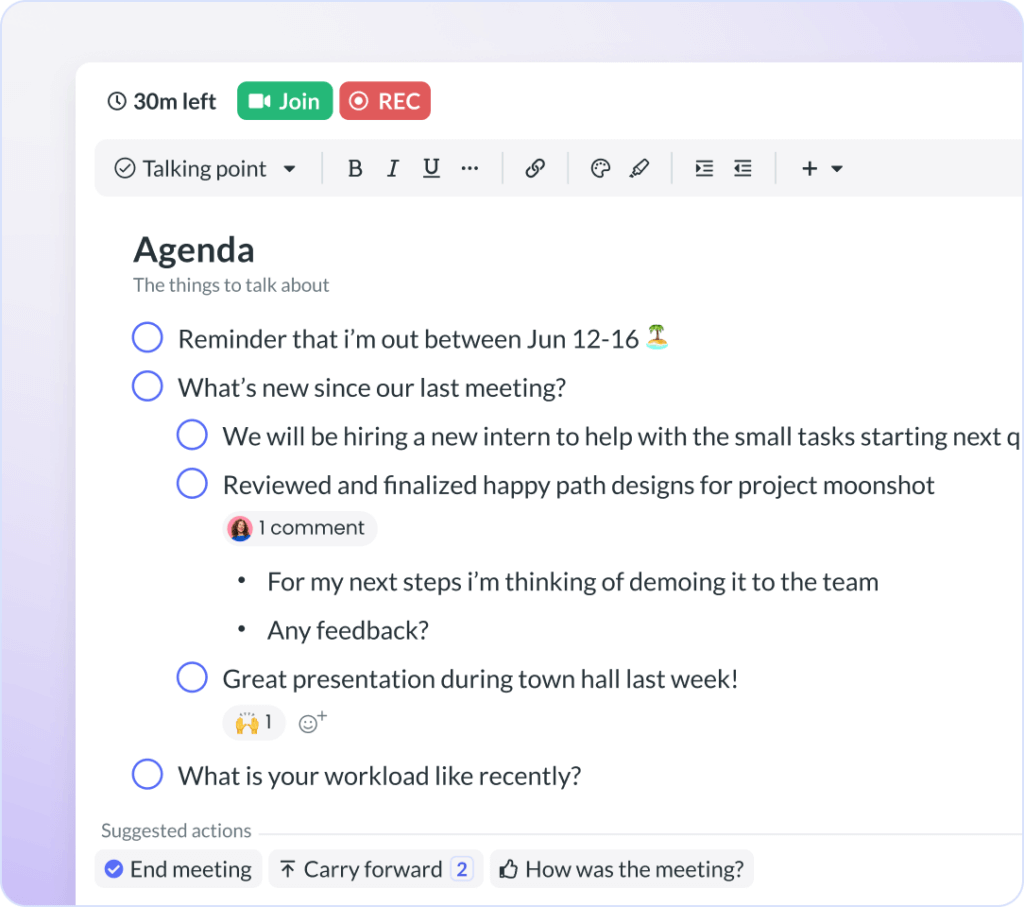





![How to Effectively Name Your Meetings [+Examples]](https://fellow.app/wp-content/uploads/2023/09/meeting-names.jpg)




